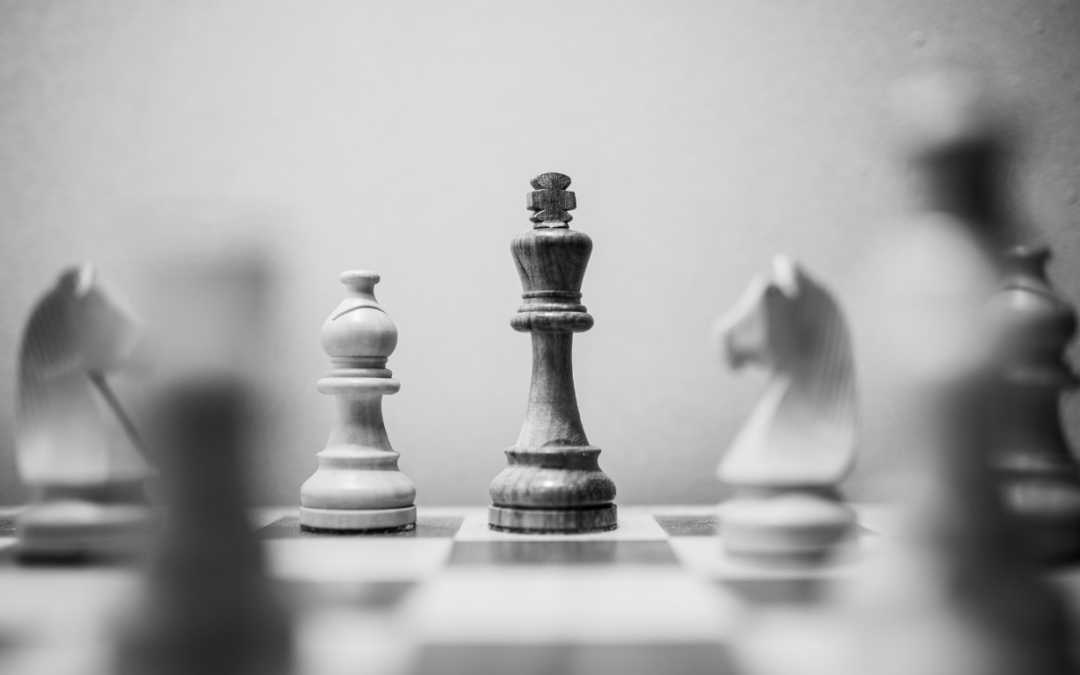You don’t need a plan to be successful in health, career, and life, you need a strategy.
We are not robots or machines, nor are we designed to be one. In my coaching practice helping clients experience optimal health and live autoimmune symptom-free, it is critical to establish healthy habits without the burden of mental fatigue. Additionally, with coaching, I believe lasting results do not come from overworking ourselves. Rather, it is an incremental approach and not an overnight sensation.
Autoimmune symptoms like chronic fatigue and brain fog can make the pursuit of productivity feel like an impossible feat. Life continues with work, responsibilities, and commitments regardless if you feel energetic and healthy. Whether you have an autoimmune condition, chronic illness, or not, we all want to get more done and reserve our time and energy.
Watch the video below or keep reading to learn how to become the most productive version of yourself, with easy strategies that will take just minutes to set up to save you hours. In the meantime, get more done, beat procrastination, and eliminate mental fatigue while you are at it.
By implementing the following strategy, you will feel more like a human and less like a hamster on a wheel by taking control of your precious time and determining how you want to use it.
The Steps To Become Productive
It begins by taking an honest assessment of where you are starting.
Step One
Track your existing schedule or routine for one week. See where all of your time goes.
Warning! This is not fun to do, but it is enlightening.
Self-awareness is a key ingredient with making changes. How are you able to change without knowing exactly where you are starting? We may think we know where our time goes, but when we actually track or measure our activities and results – it can be a rude awakening. Initially, you may even resist tracking what you are doing. Have the willingness to try.
For one week, list everything you do from waking until you go to bed at night. Do not judge or try to change your behavior. Rather, take an honest assessment of a typical week in your life.
With a week’s worth of data, see where you can eliminate activities, minimize time spent, rearrange your schedule, and streamline your week for efficiency. Efficiency equals time and energy saved.
For example, an average user of social media is said to engage for two and half hours a day! To improve upon time spent on social media, instead of eliminating it, could you simply give yourself parameters? Instead of two and a half hours, maybe you start out checking it briefly in the morning, a half hour at lunch, etc.
Step Two
Create a list of all the things you need to accomplish.
Don’t worry about the order, just brain dump whatever comes up, as it comes up. Let the list be messy – sometimes the need to be perfect keeps us from accomplishing anything at all. Think of this list as something you can scribble, cross off, re-do, revisit, etc. No one will see it. Just get started.
Once you have created this random list, write a number next to the most important task. Number one being the most important priority, and so on.
Feel free to cross out and renumber this list as you find some tasks may be more important than others.
Once you have this list, continue to step three.
Step Three
Start a new (neat) list with spaces between each task.
Take your numerically prioritized tasks and create subtasks. Essentially, create baby steps needed to accomplish your tasks. Sometimes we procrastinate on a task simply because it feels like we’re setting out to climb Mt. Everest.
By laying out all of the small subtasks, it creates a map with a starting point rather than just looking at a far-off, lofty destination.
When I started my blog and then my YouTube channel, at first, it felt incredibly daunting. I didn’t know where to start. When I mapped it out with this system, I realized my first subtasks were to simply watch videos and learn about creating a channel. When I took those initial baby steps, I felt much less overwhelmed. It was a step towards my goal, in the right direction. It was movement rather than stagnation.
Action, even small, alleviates a lot of mental fatigue by simply mapping out the baby steps. This makes tasks, even the large ones, feel achievable. The truth is, we all have to start somewhere.
Step Four
Swallow the frog.
Essentially, do what you least want to do, what you resist most, or a task that is perceived to be the most difficult first.
Procrastination largely stands in the way of productivity. We all do it, but imagine knocking out that hard task you have been avoiding; if you stopped thinking, and just did the dang thing. How would you feel? Relief? Less fatigued? More energetic?
Chances are you will eliminate the mental fatigue surrounding all the thinking, effort, and emotional (and psychological) baggage that has been weighing you down. The crazy thing is… once you do this scary, intimidating, boring, even sometimes cringe-worthy task – it’s not such a big deal.
By doing the task first thing and knocking it off of your plate, you also get a bonus! A feeling of accomplishment, a self-esteem boost, and your day is free to think about something else. How much more productive would you be if this was knocked off of your plate?
If you find a lot of resistance to a task, consider journaling about why you have resistance in the first place. Watch my video on how to journal or read the blog post to dig a little deeper and empower yourself to discover why you are blocked in the first place.
Step Five
Two words: Radical Acceptance.
Swallowing the frog, monitoring our time, or doing tasks we don’t want to do is hard for everyone. The simple fact is some people accept the difficulty and are willing to move through the energy vs. letting it hold them back.
That’s the only difference.
Step Six
Time blocking. Segment out one task at a time, ahead of time.
When you engage in one activity, do it full heartedly. For example, when you work, work. When you “play”, play.
The problem is, we often dilly dally while working, so we are half-working, half-playing. Checking social media in a meeting, reading a book on a treadmill, half listening to a conversation while reading your computer screen…
Instead of being half engaged, bring 100% presence to what you are doing. Not only will you get better results, you will also eliminate the mental fatigue from trying to do it all at once.
According to neuropsychologist Dr. Cynthia Kubu, “The more we multitask, the less we actually accomplish, because we slowly lose our ability to focus enough to learn. If we’re constantly attempting to multitask, we don’t practice tuning out the rest of the world to engage in deeper processing and learning.”
There is a popular method called the Pomodoro technique, which blocks out an amount of time, breaking the day up with intentional breaks. Here is a free app to help you set up this method easily.
When you block out time, be realistic. Don’t expect to chunk out three hours of time for a task you normally avoid and expect to be productive.
Step Seven
Schedule breaks.
When working, work for a half hour to one hour at a time. After working, get up from your work area and give yourself a break.
How much would you accomplish if you engaged in work fully knowing shortly you have an upcoming break?
Some ideas for a legitimate break would be: walk the dog, stretch, sit outside, meditate, etc.
In other words, change your activity entirely to give yourself a mental refresh. Let’s go further and define a break. A break is not checking emails, returning phone calls, or checking social media. A break is a break and your brain needs it.
Studies show we achieve more (aka are more “productive”) when we give ourselves mini breaks.
A study published in the Journal of Behavioral Addictions, found that there were high mental costs associated with using your phone for passive stimulation between other tasks. Participants who took a phone break mid-task took 19% longer to complete the assigned task and solved 22% fewer problems than other participants. It wasn’t the break itself, but using the break to look at one’s phone.
Step Eight
Be playful at first.
Be gentle and more light-hearted in your approach to productivity, timing, and change. It doesn’t have to be so serious or rigid. With a playful attitude, you could get more done.
Play with the timing of an activity. Let’s use the example of a journaling practice. Try journaling in the morning, at lunch, and before bed. What feels like that Goldilock’s fit for you? It may not be the activity you are resisting so much, maybe you need to find the fit that works best for you.
Play with the length of time. Start small and increase from there. If it is a new task and you feel resistance to it, simply try at first. Start at 5 minutes. See how the new task feels and take baby steps to increase the amount of time as you go. Sometimes starting is all we need to keep going.
Play with how you go about the task to make it more pleasurable. For example, can you play relaxing music going over bank statements or listen to upbeat music to tackle boring tasks?
Step Nine
Set the intention to make your days about you.
“Either you run the day, or the day runs you“, wisely said by Jim Rohn.
As the day begins, the emails start piling up, and essentially the agenda of others will soon take center stage.
With a well thought out, planned productivity strategy you will start to feel like your days, weeks, and life are about you.
We may have different circumstances, but we all have the same amount of time. You get to choose what to do with it. Take ownership and control of your time.
If you enjoyed this post, you may like…
How To Develop Discipline & Belief in Yourself
How to Journal: The Health Benefits, Styles, & How to Start



